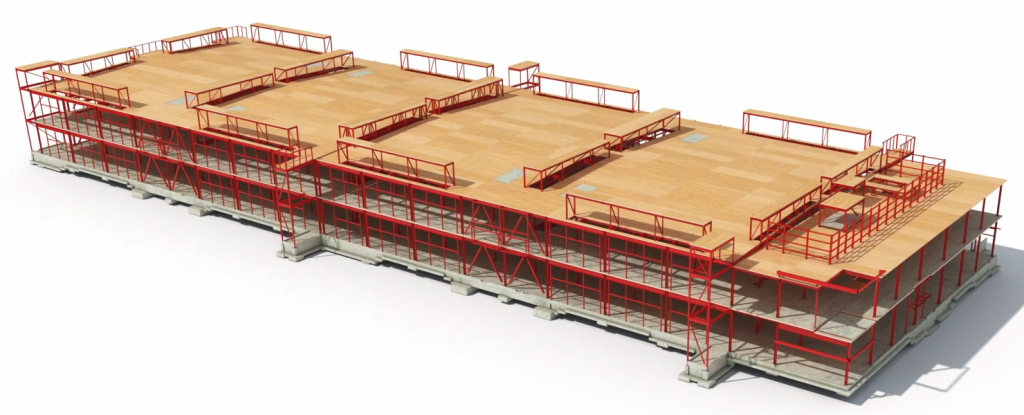Microsoft is building two data centers in Northern Virginia using cross-laminated timber for their floors and ceilings in an effort to reduce their carbon footprint. The wood will be encased in a thin layer of concrete for waterproofing and durability. These are the first Microsoft data centers to use engineered wood products, marking a significant shift away from traditional steel and concrete construction materials. The use of timber will result in a 35% lower carbon footprint compared to a steel-built facility and 65% lower compared to a precast concrete facility.
The tech giant has set ambitious carbon targets for itself, aiming to become carbon negative by 2030. To help achieve this goal, Microsoft has launched a Climate Innovation Fund to invest in climate startups developing products that support their decarbonization efforts. Some recipients of the fund include companies focused on clean power steel manufacturing and low-carbon concrete production. Microsoft is already using products from some of these startups in its data center construction and operations.
Amazon, a key competitor to Microsoft, is also investing in lower-carbon construction technologies for its data centers. Through its Climate Pledge Fund, Amazon has invested in companies working on green concrete and lower-carbon steel manufacturing. Amazon announced an investment in a company that turns carbon dioxide into a mineral product for use in construction. Microsoft and Amazon are both exploring innovative ways to reduce the environmental impact of their data center operations.
One of the challenges of using cross-laminated timber in construction is the lack of experience among builders working with this material. While the use of timber may add to the construction costs in Virginia, Microsoft is committed to exploring this option for future projects. The company sees engineered timber as an important tool in their construction toolkit going forward, despite the challenges associated with using this material. Both Microsoft and Amazon are pushing the boundaries of sustainable construction practices in an effort to reduce the carbon footprint of their data centers.
Overall, the move towards using cross-laminated timber and other climate-friendly construction materials represents a significant shift in the industry. As tech companies like Microsoft and Amazon continue to invest in innovative solutions for reducing their carbon emissions, the construction industry is likely to see more widespread adoption of sustainable building practices. With the aim of becoming carbon negative by 2030, Microsoft is leading the way in utilizing engineered wood products in its data center construction, setting a new standard for environmentally friendly building practices.


